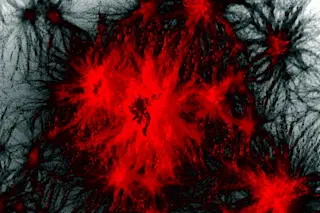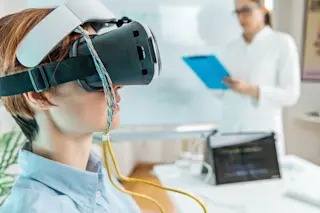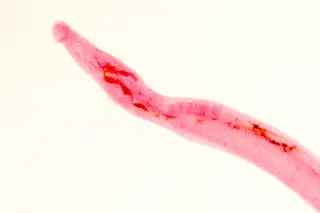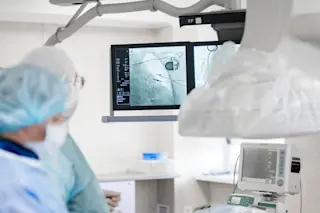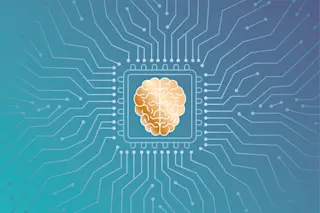When Gautam Dantas first observed bacteria eating antibiotics, he was sure there had to be some mistake. The year was 2007, and he was trying to coax microbes to turn plant waste into biofuels. Dantas was a postdoctoral researcher in the Harvard University lab of George Church, a pioneer in genetics research. As part of his investigation, Dantas had exposed one group of soil microbes to a dose of antibiotic, which he figured the bacteria wouldn’t eat. A week later, a group grown on a diet of plant matter — and exposed to no antibiotics — had grown only a little. In the dishes filled with antibiotic, however, most of the microbes were having a picnic. Instead of proving deadly, the antibiotics were providing sustenance.
“We figured we’d probably made a mistake,” Dantas recalls a decade later. He’s now a professor of pathology, immunology and biomedical engineering at Washington University, managing a lab with more than a dozen researchers studying everything from biofuel production to the human microbiome. But the mystery of those antibiotic-eating bacteria has remained a personal obsession.
Earlier this year, after hundreds of experiments, Dantas finally published his solution in Nature Chemical Biology. What he discovered provides important insights into antibiotic resistance, the precipitous increase in bacterial immunity to what should be killer drug doses. Public health officials now consider it a medical crisis. Every year, some 700,000 deaths are attributed to pathogens that are resistant to penicillin and other drugs designed to kill them — largely in response to overprescription and careless disposal. With any luck, Dantas’ hungry bacteria will help, by preventing resistance from evolving in the first place.
A Taste for Penicillin
Biologists have known bacteria could consume antibiotics since the early ’60s, but the knowledge was neither widespread nor deep when Dantas accidentally witnessed his first antibiotic feast. Intrigued, he decided to follow up on forgotten old studies by surveying the phenomenon comprehensively. He bought all the relevant drugs listed in the lab’s microbiology supply catalog, and collected soils from public parks, secluded forests and cornfields that were fertilized with manure. All 18 drugs were eaten up by microbes in his soil samples, especially alarming because the concentrations were 50 to 100 times greater than ordinary antibiotic-resistant bacteria can tolerate.
Published in Science in 2008, the results made a deep impression on the field. “It’s one of those papers that unveils a whole new area of research,” gushed McMaster University biochemist Gerry Wright at the time. But unveiling the ubiquity of antibiotic eating only deepened the mystery. “The first paper in 2008 was ‘gee whiz, that’s surprising,’ ” Wright says in retrospect. “Gautam’s recent paper does the hard biochemical and genomics work to figure out how bacteria in the soil degrade [one category of] antibiotics.”
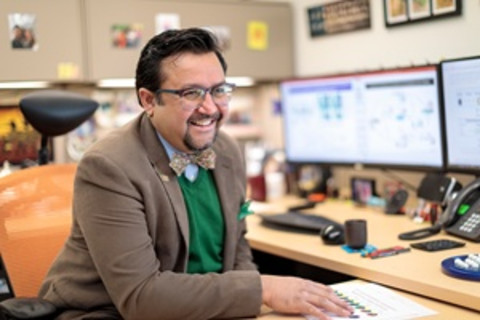
Gautam Dantas discovered, while working in George Church’s lab at Harvard University, that bacteria can consume antibiotics.
The category Dantas chose to analyze includes the granddaddy of all antibiotic drugs: penicillin. Microbiologist Alexander Fleming serendipitously discovered it in 1928, and variations on the original are so abundant that it remains the most common class of antibiotic even today.
The whole category is based on a molecule called beta-lactam, which is naturally secreted by the Penicillium chrysogenumfungus, giving the species a competitive advantage against other microorganisms in the wild. Beta-lactam works by weakening the cell wall of the creature under attack. But bacteria have evolved to resist beta-lactam by producing an enzyme that breaks the ringlike part of its molecular structure.
Dantas set out to learn how some soil microbes not only thwart the toxin, but also thrive on it. He found three distinct stages of antibiotic catabolism (as the process of breaking apart complex molecules is technically known). First, the microbe cleaves the beta-lactam ring in the same way that most any resistant bug would do it. Then it cuts off the broken ring from the remainder of the penicillin molecule, leaving behind a substance called phenylacetic acid. In the final step, the bacteria swallow up the phenylacetic acid as an energy source.
After determining which genes were likely to give bacteria these abilities, Dantas put them to the test by adding them to the DNA of an unrelated species, the bacterial workhorse E. coli.
When the E. coli was thus fortified, it ate its first penicillin buffet.
Engineering Gluttons
Recently, Dantas traveled to Peru to sample sewage. He wanted to learn how prevalent antibiotics were in wastewater treatment plants, where pathogens are also likely to be present, and thus could be actively evolving resistance. He found multiple top-prescribed antibiotics in the wastewater. Other studies have shown high concentrations of penicillin and other drugs in runoff from farms and near pharmaceutical plants. If these drugs could be eaten as rapidly as they’re dumped, the pathogens wouldn’t have a chance to get familiar with them. A major cause of resistance could be killed at the source.
Dantas believes that his transgenic E. coli might just do the job, though not the strain that his lab engineered, which grows on penicillin very slowly and prefers eating sugars. For this plan to work, scientists will need to engineer antibiotic gluttons.
Wright sees great potential in the idea, which could pre-treat contaminated waste products to remove antibiotics even before they get out into the open. “The concentration of antibiotics coming from effluents of manufacturing sites is stunning,” says Wright. “Pre-treatment to inactivate the compounds would be of great benefit.” Preemptive treatment could also be helpful in hospitals, eliminating antibiotics before effluent flows into the municipal sewage.
Unfortunately, the technique is not risk-free. Researchers would need different strains of these microgourmands to disarm and digest all relevant antibiotics, not just penicillin. And there’s a danger in being too successful. Bacteria are notorious for sharing useful bits of DNA. The drug-eating bacteria could seed the next crop of antibiotic-resistant bugs. “If it goes bad, we may never be able to come back,” cautions Dantas.
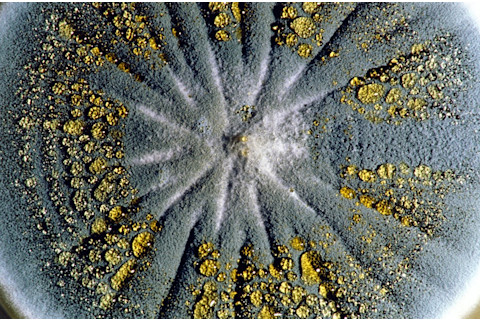
Penicillium chrysogenum Geoff Tompkinson/Science Source
One workaround would be to use the transgenic bacteria as factories for making enzymes that break down antibiotics, and then releasing those enzymes into the environment. (The enzymes are not alive and don’t have any antibiotic resistance genes to share. You just have to be sure the bacteria don’t escape the factory.) While promising in concept — and worth pursuing, according to Dantas — the process would be far too expensive to fill the world’s sewers and cesspools, and even in the near future would probably be practical only in antibiotic hot spots such as hospitals.
So the ultimate answer might be to deploy living bacteria after all, which would flourish wherever antibiotics accumulate. Researchers including Church are hard at work trying to mitigate the risks. One promising approach is to spread out the essential genes across the bacteria’s entire genome, rather than clustering them all in one place. Since genetic material tends to get shared between bacteria in chunks, and many genes are needed to disarm antibiotics, pathogens would be unlikely to acquire the whole package.
Meanwhile, scientists are learning why bacteria engage in the seemingly counterintuitive behavior of eating substances meant to kill them. Antibiotics are ancient, as is antibiotic resistance — evolutionary consequences of competition in the world’s soils. Dantas now sees antibiotic catabolism as just another part of this bigger survival game. “Antibiotics are not these weird privileged molecules,” says Dantas. “Any carbon source that’s not utilized is one that’s wasted, and nature abhors a vacuum.”
Even if humans don’t invent the means to clean up the flow of antibiotics, bacteria will probably figure it out on their own. It just isn’t likely to happen before pathogens attain resistance and wreak havoc on human civilization.
[This article originally appeared in print as "The Antibiotic Eaters"]


